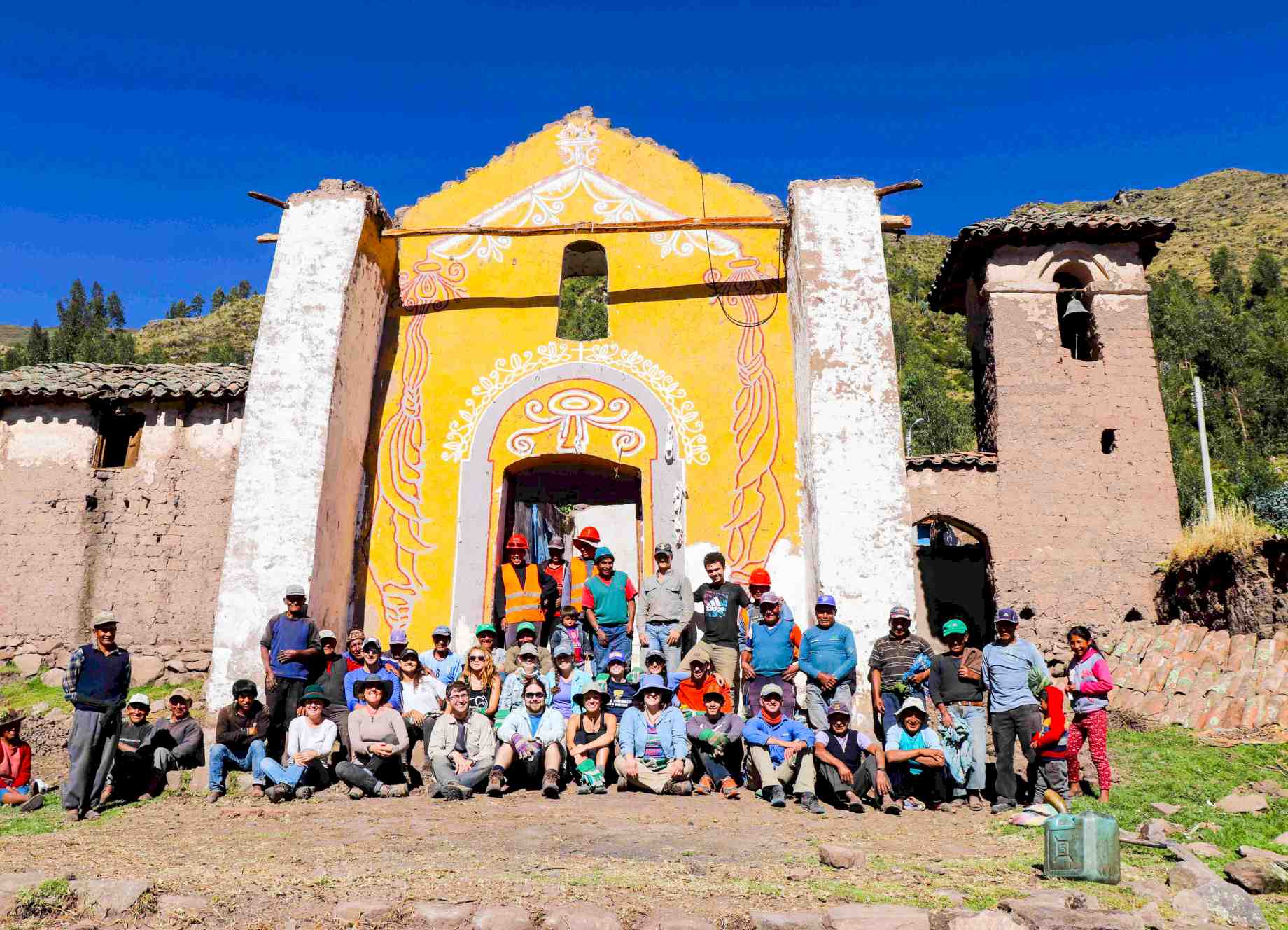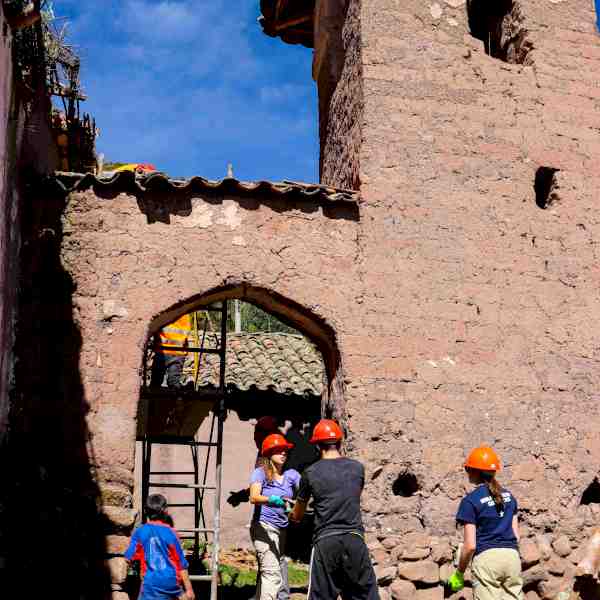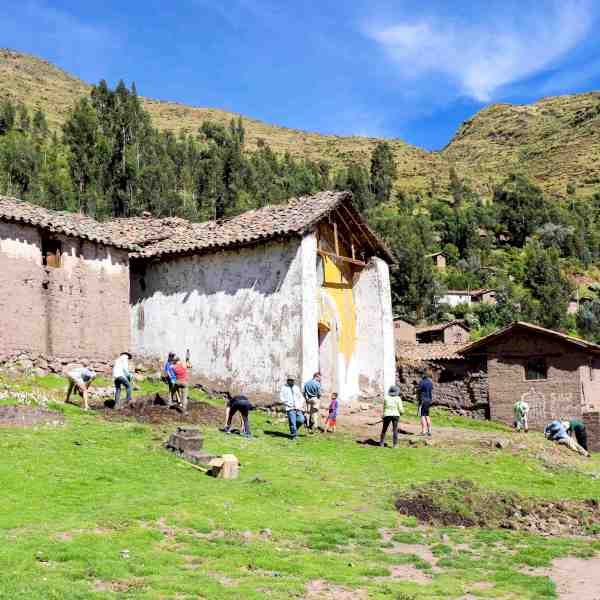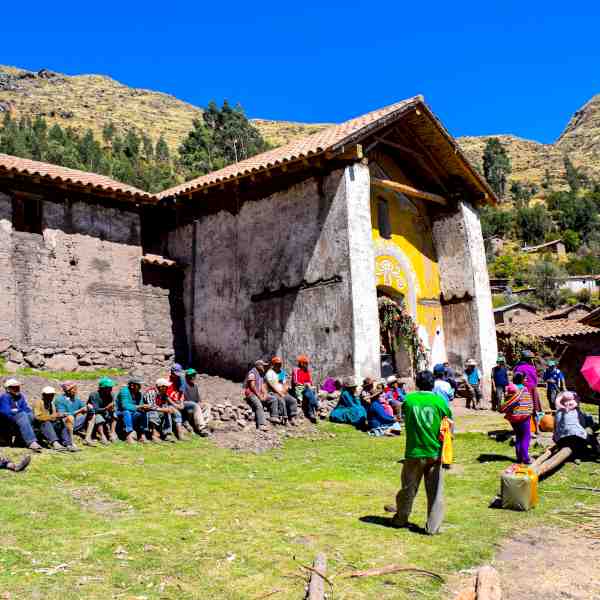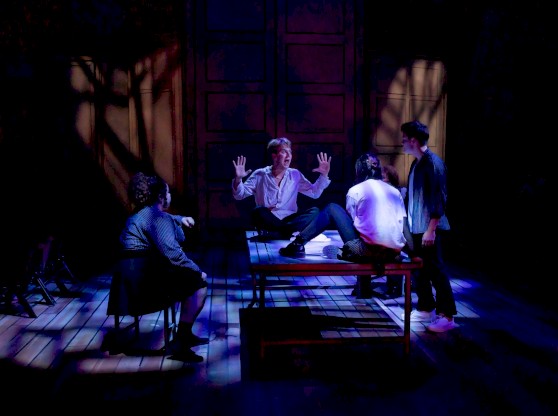Twenty University of Florida honors students helped restore a 16th-century church in Peru during a study abroad trip in May. Scholars in Peru is a trip that takes place every two years for recipients of the Lombardi and Stamps scholarships, exclusive to 11 incoming freshman each year.
Professors Maya Stanfield-Mazzi and Regan Garner led the two-weeklong trip where students received one credit hour for the hands-on learning experience. Stanfield-Mazzi is an associate professor at the School of Art + Art History and an art historian specializing in art of Pre-Columbian and colonial Latin America. Garner is the Associate Director and adviser for the UF Honors Program. Together, they have spearheaded the trip since its creation in 2008.
Though the program was established 10 years ago, this year’s was the first of its kind to complete a project that closely combined the service learning and art history components, according to Garner.
The students worked for four days in the remote town of Parara, a daily six hour round-trip bus ride away from Cusco where the group stays. During their time in Parara, the students worked with the Archbishopric of Cusco and the Peruvian Ministry of Culture in an effort to learn about cultural patrimony, while helping conserve the town church.
The town locals requested the group to assist in the restoration project because the church’s roof needed replacing to protect murals inside from a leak. The students removed the church’s roof, dug a plaza for outside seating, and rebuilt stone patio steps.
In years past, part of the class had an art history focus where the group would visit archaeological and colonial sites, such as churches and then later discuss the art and architecture. The service-learning component was always separate and would feature more developmental projects, such as building an adobe stove. Combining the two components into one project for students to get hands-on learning was a new twist that Stanfield-Mazzi thought made the trip unforgettable.
“A lot of the time as an art historian, you feel that you don’t have a tangible impact in your work,” Stanfield-Mazzi said. “This trip was the one time where I felt I could take my skills as an art historian and combine them with the students’ abilities to create a lasting impact for an entire community.”
But Stanfield-Mazzi’s impact reached more than just the community. Sara Janetzke, a third-year visual arts studies student found the trip to be her favorite of the three trips she has taken so far with the program. Currently in Stanfield-Mazzi’s Introduction to Latin American Art History class, Janetzke feels a special connection to the trip daily, even six months later.
“Every day in class, I hear about all of these things and it’s amazing because I saw those paintings. I saw those buildings. I was there and experienced the culture firsthand,” Janetzke said. “It provides a new depth to my studies that looking at an image of the art online or in a book just can’t do.”
On the trip, the group also visited other cultural heritage sites in different stages of conservation, including the churches of Andahuaylillas and Rondocan, according to Janetzke.
“Seeing other sites in the midst of various other stages of renovation was really amazing to see, especially in the midst of our own efforts on the church we were working on,” Janetzke said.
The church is now complete and already in use by the Parara locals.
